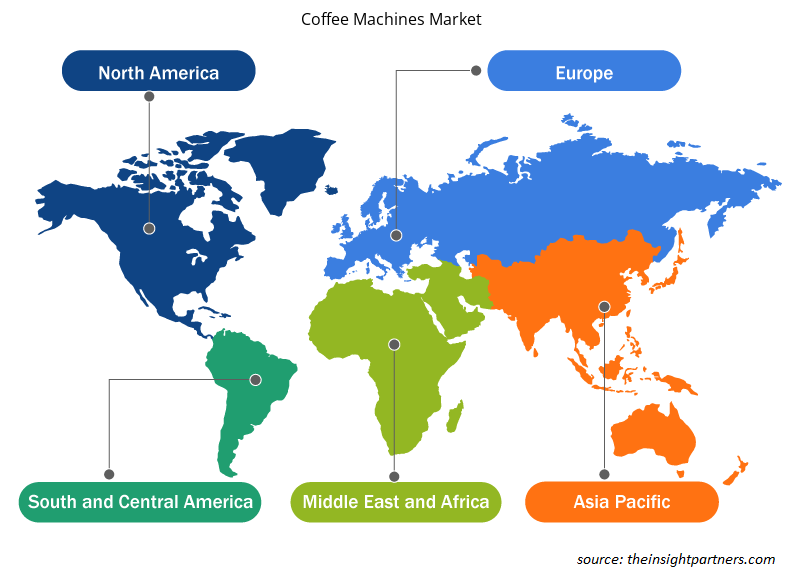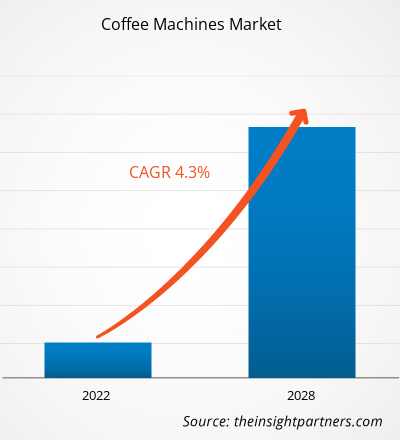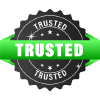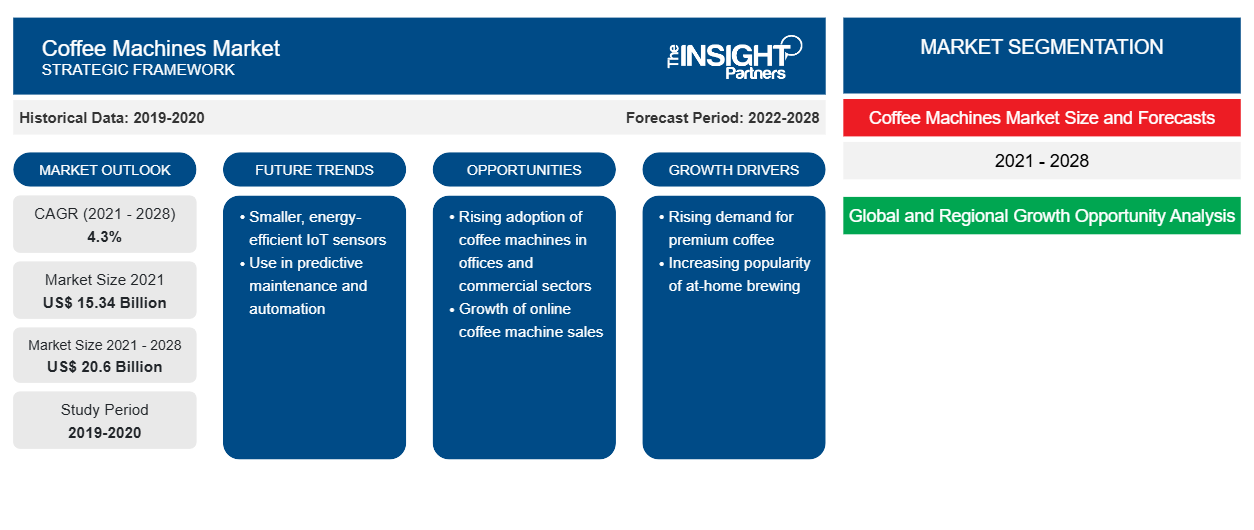[調査レポート] コーヒーマシン市場規模は2021年に153億4,075万米ドルと評価され、2028年には205億9,679万米ドルに達すると予測されており、2021年から2028年にかけて4.3%のCAGRで成長すると予想されています。
市場洞察とアナリストの見解:
コーヒーマシンは、コーヒーを淹れるための装置です。フレンチプレス、エスプレッソコーヒーマシン、フィルターコーヒーマシン、カプセル&ポッドコーヒーマシンなど、さまざまなタイプのコーヒーマシンがあります。各マシンは異なるメカニズムで動作します。たとえば、フィルターコーヒーマシンでは、水が自動的に加熱チューブに滴り落ち、フィルターを通過する挽いたコーヒーに注がれます。一方、カプセル&ポッドコーヒーマシンでは、コーヒーはプラスチックまたはアルミニウム製のカプセルに詰められ、小さな容器に入れてコーヒーメーカーに入れられ、コーヒーが淹れられます。企業部門だけでなく公共部門でもコーヒーマシンの需要が高まっています。この要因は、コーヒーマシン市場を世界的に大きく牽引しています。
成長の原動力と課題:
ここ数年、多忙な仕事のスケジュールや労働時間の延長により、人々のライフスタイルは劇的に変化しました。ペースの速いライフスタイルにより、人々はますますコンビニエンスフードや飲料へとシフトしています。企業部門では、人々は仕事関連のストレスに絶えずさらされているため、同僚や友人と過ごす自由時間を探しています。コーヒーは、その贅沢な味と香りのために広く消費されている多用途の飲料の1つです。さらに、カフェイン含有量は気分を高め、やる気を誘発するのに役立ちます。この要因は、世界中のコーヒー業界を大きく牽引しています。コーヒーマシンはコーヒーを瞬時に淹れるのに役立つため、企業部門全体でコーヒーマシンの需要が高まっています。この要因は、コーヒーマシン市場を大きく牽引しています。しかし、コーヒーの非常に中毒性の高い性質に対する認識が人々の間で高まっているため、人々はコーヒーを天然フルーツジュース、バブルティー、スパークリングウォーターなどの他の飲料に置き換えています。また、カフェインの大量摂取による健康への悪影響に対する認識の高まりも、個人間のコーヒー需要を妨げています。これらの要因はコーヒーの消費に悪影響を及ぼし、予測期間中のコーヒーマシンの需要を阻害すると予想されます。
要件に合わせてレポートをカスタマイズする
このレポートの一部、国レベルの分析、Excelデータパックなど、あらゆるレポートを無料でカスタマイズできます。また、スタートアップや大学向けのお得なオファーや割引もご利用いただけます。
- このレポートの主要な市場動向を入手してください。この無料サンプルには、市場動向から見積もりや予測に至るまでのデータ分析が含まれます。
レポートのセグメントと範囲
「世界のコーヒーマシン市場」は、タイプ、カテゴリ、エンドユーザー、および地域に基づいてセグメント化されています。タイプに基づいて、コーヒーマシン市場は、フィルターコーヒーマシン、エスプレッソコーヒーマシン、カプセル&ポッドコーヒーマシン、その他に分類されています。カテゴリに基づいて、市場は手動と自動&半自動に分類されます。エンドユーザーに基づいて、コーヒーマシン市場は住宅用と非住宅用に分類されています。地理に基づくコーヒーマシン市場は、北米(米国、カナダ、メキシコ)、ヨーロッパ(ドイツ、フランス、イタリア、英国、ロシア、その他のヨーロッパ)、アジア太平洋(オーストラリア、中国、日本、インド、韓国、その他のアジア太平洋)、中東およびアフリカ(南アフリカ、サウジアラビア、UAE、その他の中東およびアフリカ)、南米および中米(ブラジル、アルゼンチン、その他の南米および中米)に分類されています。
セグメント分析:
エンドユーザーに基づいて、コーヒーマシン市場は住宅用と商業用に分かれています。住宅用セグメントはコーヒーマシン市場で大きなシェアを占めており、予測期間中に大幅な成長を記録すると予想されています。コーヒーの採用の増加と、さまざまな種類のコーヒーの焙煎と抽出に対する関心の高まりにより、住宅部門全体でコーヒーマシンの需要が高まっています。さらに、COVID-19の発生により、人々は家にいることが義務付けられ、すべての食品サービス店は閉鎖されたままでした。これにより、特に先進国で、家庭全体でコーヒーマシンの需要が引き起こされました。これらすべての要因が、世界中のコーヒーマシン市場を押し上げる可能性があります。
地域分析:
地理に基づいて、コーヒーマシン市場は、北米、ヨーロッパ、アジア太平洋、中南米、中東およびアフリカの5つの主要地域に分かれています。世界のコーヒーマシン市場は、2022年に49億5,177万米ドルを占めたヨーロッパが主流でした。北米は、世界市場で20%以上のシェアを占める2番目の主要貢献者です。アジア太平洋地域は、予測期間中に5%を超えるCAGRでかなりの成長を記録すると予想されています。北米諸国、特に米国でのコーヒーの1日あたりの摂取量の増加は、コーヒーマシンの需要を牽引しています。全米コーヒー協会(NCA)によると、アメリカ人の62%が毎日コーヒーを消費していると報告されています。さらに、ペースの速いライフスタイルによる外出先での消費の増加傾向も、北米の非住宅部門全体でコーヒーマシンの需要を牽引しています。
業界の発展と将来の機会
コーヒーマシン市場で活動している主要企業が行っているさまざまな取り組みを以下に示します。
- 2023年3月、コーヒーマシンの大手メーカーであるデロンギは、コーヒーの計量や推測作業を排除し、消費者が挽きたての上質なコーヒー体験を楽しめる全自動ドリップコーヒーマシン「Truerew」を発売しました。
- 2020年10月、ネスプレッソ プロフェッショナルは、COVID-19パンデミックを受けて職場の安全性を強化する新しいタッチレス機能をネスプレッソ モメント コーヒーマシンに導入しました。
- 2022年3月、オーストラリアを拠点とする家庭用コーヒー機器メーカーのBreville Groupは、イタリアを拠点とするプロシューマー向けエスプレッソ機器会社Lelitの買収を発表しました。Lelitの家庭用エスプレッソコーヒーマシンのポートフォリオは、Breville Groupの家庭用コーヒー機器の既存のポートフォリオを補完するものです。この買収により、同社は幅広い顧客層に対応できるようになり、消費者へのリーチが拡大し、収益が増加するでしょう。
- 2021年3月、デロンギはスイスのコーヒーマシンメーカーであるエバーシスの残りの60%の株式を取得しました。同社は全自動エスプレッソコーヒーマシンのポートフォリオを持っています。同社の買収により、デロンギは製品ラインを拡大し、さまざまな地域の多数の消費者に対応できるようになります。
Covid-19の影響:
COVID-19パンデミックは、さまざまな国のほぼすべての業界に影響を及ぼしました。北米、ヨーロッパ、アジア太平洋(APAC)、中南米(SAM)、中東アフリカ(MEA)でのロックダウン、旅行制限、事業停止は、消費財業界を含むいくつかの業界の成長を妨げました。製造ユニットの停止は、世界的なサプライチェーン、製造活動、配送スケジュール、および必須および非必須の製品の販売を混乱させました。さまざまな企業が2020年に製品の配送の遅れと製品の販売の低迷を目撃しました。パンデミックによる経済不況により、消費者は購入の決定においてより慎重かつ選択的になりました。特に発展途上地域では、収入の低下と不確実な収益見通しにより、消費者による非必須の購入が大幅に減少しました。多くのコーヒーマシンメーカーは、パンデミックの初期段階で消費者の需要が減少したため、利益の減少に直面しました。しかし、2021年末までに多くの国でワクチン接種が完全に完了し、政府はロックダウンや渡航禁止を含む特定の規制の緩和を発表しました。人々がさまざまな場所へ旅行するようになり、空港や鉄道駅でのコーヒーの需要が増加し、コーヒーマシンの需要も高まりました。これらすべての要因が、さまざまな地域でのコーヒーマシン市場の成長にプラスの影響を与えました。
コーヒーマシン市場の地域別分析
予測期間を通じてコーヒーマシン市場に影響を与える地域的な傾向と要因は、Insight Partners のアナリストによって徹底的に説明されています。このセクションでは、北米、ヨーロッパ、アジア太平洋、中東、アフリカ、南米、中米にわたるコーヒーマシン市場のセグメントと地理についても説明します。

- コーヒーマシン市場の地域別データを入手
コーヒーマシン市場レポートの範囲
| レポート属性 | 詳細 |
|---|---|
| 2021年の市場規模 | 153.4億米ドル |
| 2028年までの市場規模 | 206億米ドル |
| 世界のCAGR(2021年~2028年) | 4.3% |
| 履歴データ | 2019-2020 |
| 予測期間 | 2022-2028 |
| 対象セグメント | コーヒーマシン市場規模と予測
|
| 対象地域と国 | 北米
|
| 市場リーダーと主要企業プロフィール |
|
市場プレーヤーの密度:ビジネスダイナミクスへの影響を理解する
コーヒーマシン市場は、消費者の嗜好の変化、技術の進歩、製品の利点に対する認識の高まりなどの要因により、エンドユーザーの需要が高まり、急速に成長しています。需要が高まるにつれて、企業は提供を拡大し、消費者のニーズを満たすために革新し、新たなトレンドを活用し、市場の成長をさらに促進しています。
市場プレーヤー密度とは、特定の市場または業界内で活動している企業または会社の分布を指します。これは、特定の市場スペースに、その規模または総市場価値と比較して、どれだけの競合相手 (市場プレーヤー) が存在するかを示します。
コーヒーマシン市場で事業を展開している主要企業は次のとおりです。
- Keurig Green Mountain 社
- ロバート・ボッシュ有限会社
- エレクトロラックス Ab.
- イリーカフェスパ
- フィリップスNV
免責事項:上記の企業は、特定の順序でランク付けされていません。

- コーヒーマシン市場のトップキープレーヤーの概要を入手
競争環境と主要企業:
世界のコーヒーマシン市場で活動している著名な企業には、Keurig Green Mountain, Inc.、Robert Bosch GmbH、Electrolux AB、illycaffè SpA、Koninklijke Philips NV、Krups GmBH (Groupe SEB)、Morphy Richards、Nestlé SA、Panasonic Corporation、LUIGI LAVAZZA SPA、De'Longhi Appliances Srl などがあります。これらの企業は、革新的な機能と抽出技術を備えた最先端のコーヒーマシンを提供し、消費者に優れたコーヒー体験を提供しています。
よくある質問
The major players operating in the global coffee machines market are Keurig Green Mountain, Inc. Robert Bosch Gmbh; Electrolux Ab.; Illycaffè S.P.A.; Koninklijke Philips N.V; Krups Gmbh; Morphy Richards; Nestlé S.A.; Panasonic Corporation; and Luigi Lavazza S.P.A among many others.
Coffee machines are used to brew coffee from ground coffee, coffee beans or capsules. They are available in various sizes and shapes as well as in different type of models which includes filter coffee machines, espresso coffee machines, capsule and pod coffee machines, and others. They are also available in manual, automatic and semi-automatic variants. They are used in various residential and non-residential applications such as office spaces, airports, cafeterias and others.
Espresso has higher caffeine levels per ounce over regular coffee and is very strong. Although quite popular in Europe, especially Italy, they have been witnessing increased demand in other regions such as North America and Asia Pacific. Increasing preference for the taste as well the wide availability of different espresso machines for residential applications have significantly propelled the demand for espresso machines.
Asia Pacific region is an area of tremendous opportunity for the global coffee machines market. The region is a traditionally tea consuming region and the penetration of coffee machines is low compared to the developed economies of Europe and North America. Recent shift in preference for coffee over tea has propelled the demand for coffee machines. Large number of young population is also a major contributor towards the growth of the coffee machines market in Asia Pacific.
Capsule and pod coffee machines have been witnessing significant growth across the globe. The ease of usage and the availability of various flavors of coffee have driven the adoption of capsule and pod coffee machines for use in homes and small offices. However, the traditional coffee brewers that prefer freshly ground coffee pose a restraint to the capsule and pod coffee machines market.
Automatic and semi-automatic coffee machines are expected to grow significantly over the forecast period. Increasing number of new coffee enthusiasts and shift in preference from traditionally tea drinking regions such as Asia Pacific have fueled the adoption of automatic and semi-automatic coffee machines. The ease of usage and convenience for home brewing is a major factor propelling the adoption of automatic and semi-automatic coffee machines.
- 過去2年間の分析、基準年、CAGRによる予測(7年間)
- PEST分析とSWOT分析
- 市場規模価値/数量 - 世界、地域、国
- 業界と競争環境
- Excel データセット
お客様の声
購入理由
- 情報に基づいた意思決定
- 市場動向の理解
- 競合分析
- 新興市場の特定
- 顧客インサイト
- 市場予測
- リスク軽減
- 業務効率の向上
- 戦略計画
- 投資の正当性
- 業界イノベーションの追跡
- 規制動向への対応
はい!レポートの範囲(目次)、レポートの構成、そしてレポート全体の価値を評価するのに役立つ厳選されたインサイトを含む、レポートの無料サンプルをご提供しています。 「サンプルをダウンロード」ボタンをクリックするか、お問い合わせの上、サンプルをお送りください。
はい、アナリストによるサポートはパッケージに含まれています。ご購入後、アナリストにご連絡いただき、レポートの洞察や手法についてご説明したり、調査結果がお客様のビジネスニーズにどのように当てはまるかご相談いただけます。
ご注文が完了すると、確認メールと請求書が届きます。
• 公開済みレポートの場合:4~6営業時間以内に、セキュリティ保護されたメールがお客様のメールアドレスに送信されます。
• 近日公開予定レポートの場合:ご注文は事前予約として記録されます。リリース予定日については、担当チームからご連絡し、最新情報をお知らせいたします。レポートが公開され次第、ご登録いただいたメールアドレスに配信いたします。
お客様の特定の目的に合わせてレポートをカスタマイズするためのオプションをご用意しております。特定の地域、業界セグメント、競合他社の分析、データカットなど、より深い洞察が必要な場合でも、当社のリサーチチームがそれに応じてレポートをカスタマイズいたします。ご要望をお聞かせください。お客様に合わせたご提案やスコープを喜んでご提供いたします。
レポートは、選択したライセンスに応じて、PDF形式またはExcelデータセットで提供されます。
PDF版では、完全な分析とビジュアルがすぐに読める形式で提供されます。Excelデータセットには、すべてのデータテーブルが含まれており、簡単に操作して詳細な分析を行うことができます。
ご購入時にライセンスオプションをご確認ください。または、ご購入に含まれる形式を確認するには、お問い合わせください。
当社の決済プロセスは完全に安全で、PCI-DSSに準拠しています。
当社は、すべての取引が業界標準のSSL暗号化で保護されるよう、信頼性の高い暗号化された決済ゲートウェイを使用しています。お支払い情報は当社のサーバーに保存されることはありません。認定されたサードパーティの決済代行業者によって安全に処理されます。
お客様の個人情報と財務情報は当社で安全に保管されますので、安心してご購入いただけます。
はい、まとめ買いの場合は特別価格をご用意しております。
複数のレポートをご購入いただく場合は、お客様のニーズに合わせてカスタマイズされたバンドルオファーまたは数量ベースの割引をご提供いたします。ご検討中のレポートのリストを弊社の営業チームまでお送りください。お客様に合わせたお見積もりをお送りいたします。
はい、もちろんです。
弊社のチームが、お客様が十分な情報に基づいて意思決定できるようお手伝いいたします。レポートの範囲、方法論、カスタマイズオプション、最適なライセンスなど、ご質問がございましたら、お気軽にお問い合わせください。 sales@theinsightpartners.com までご連絡ください。担当者が速やかにご連絡いたします。
はい、ご購入が完了すると請求書が自動的に生成され、ご登録いただいたメールアドレスに送信されます。
特定の形式で請求書が必要な場合や、追加情報(会社名、GST、VAT情報など)が必要な場合は、お気軽にお問い合わせください。喜んでご対応させていただきます。
はい、もちろんです。
レポートへのアクセスや受信に問題が発生した場合は、サポートチームがサポートいたします。ご注文情報を添えて、メールまたはライブチャットでお問い合わせください。問題を迅速に解決し、お客様が中断することなくレポートにアクセスできるようお手伝いいたします。















The List of Companies - Coffee Machines Market
- Keurig Green Mountain, Inc.
- Robert Bosch Gmbh
- Electrolux Ab.
- Illycaffè S.P.A.
- Koninklijke Philips N.V.
- Krups Gmbh
- Morphy Richards
- Nestlé S.A.
- Panasonic Corporation
- Luigi Lavazza S.P.A.



The Insight Partners performs research in 4 major stages: Data Collection & Secondary Research, Primary Research, Data Analysis and Data Triangulation & Final Review.
- Data Collection and Secondary Research:
As a market research and consulting firm operating from a decade, we have published and advised several client across the globe. First step for any study will start with an assessment of currently available data and insights from existing reports. Further, historical and current market information is collected from Investor Presentations, Annual Reports, SEC Filings, etc., and other information related to company’s performance and market positioning are gathered from Paid Databases (Factiva, Hoovers, and Reuters) and various other publications available in public domain.
Several associations trade associates, technical forums, institutes, societies and organization are accessed to gain technical as well as market related insights through their publications such as research papers, blogs and press releases related to the studies are referred to get cues about the market. Further, white papers, journals, magazines, and other news articles published in last 3 years are scrutinized and analyzed to understand the current market trends.
- Primary Research:
The primarily interview analysis comprise of data obtained from industry participants interview and answers to survey questions gathered by in-house primary team.
For primary research, interviews are conducted with industry experts/CEOs/Marketing Managers/VPs/Subject Matter Experts from both demand and supply side to get a 360-degree view of the market. The primary team conducts several interviews based on the complexity of the markets to understand the various market trends and dynamics which makes research more credible and precise.
A typical research interview fulfils the following functions:
- Provides first-hand information on the market size, market trends, growth trends, competitive landscape, and outlook
- Validates and strengthens in-house secondary research findings
- Develops the analysis team’s expertise and market understanding
Primary research involves email interactions and telephone interviews for each market, category, segment, and sub-segment across geographies. The participants who typically take part in such a process include, but are not limited to:
- Industry participants: VPs, business development managers, market intelligence managers and national sales managers
- Outside experts: Valuation experts, research analysts and key opinion leaders specializing in the electronics and semiconductor industry.
Below is the breakup of our primary respondents by company, designation, and region:

Once we receive the confirmation from primary research sources or primary respondents, we finalize the base year market estimation and forecast the data as per the macroeconomic and microeconomic factors assessed during data collection.
- Data Analysis:
Once data is validated through both secondary as well as primary respondents, we finalize the market estimations by hypothesis formulation and factor analysis at regional and country level.
- Macro-Economic Factor Analysis:
We analyse macroeconomic indicators such the gross domestic product (GDP), increase in the demand for goods and services across industries, technological advancement, regional economic growth, governmental policies, the influence of COVID-19, PEST analysis, and other aspects. This analysis aids in setting benchmarks for various nations/regions and approximating market splits. Additionally, the general trend of the aforementioned components aid in determining the market's development possibilities.
- Country Level Data:
Various factors that are especially aligned to the country are taken into account to determine the market size for a certain area and country, including the presence of vendors, such as headquarters and offices, the country's GDP, demand patterns, and industry growth. To comprehend the market dynamics for the nation, a number of growth variables, inhibitors, application areas, and current market trends are researched. The aforementioned elements aid in determining the country's overall market's growth potential.
- Company Profile:
The “Table of Contents” is formulated by listing and analyzing more than 25 - 30 companies operating in the market ecosystem across geographies. However, we profile only 10 companies as a standard practice in our syndicate reports. These 10 companies comprise leading, emerging, and regional players. Nonetheless, our analysis is not restricted to the 10 listed companies, we also analyze other companies present in the market to develop a holistic view and understand the prevailing trends. The “Company Profiles” section in the report covers key facts, business description, products & services, financial information, SWOT analysis, and key developments. The financial information presented is extracted from the annual reports and official documents of the publicly listed companies. Upon collecting the information for the sections of respective companies, we verify them via various primary sources and then compile the data in respective company profiles. The company level information helps us in deriving the base number as well as in forecasting the market size.
- Developing Base Number:
Aggregation of sales statistics (2020-2022) and macro-economic factor, and other secondary and primary research insights are utilized to arrive at base number and related market shares for 2022. The data gaps are identified in this step and relevant market data is analyzed, collected from paid primary interviews or databases. On finalizing the base year market size, forecasts are developed on the basis of macro-economic, industry and market growth factors and company level analysis.
- Data Triangulation and Final Review:
The market findings and base year market size calculations are validated from supply as well as demand side. Demand side validations are based on macro-economic factor analysis and benchmarks for respective regions and countries. In case of supply side validations, revenues of major companies are estimated (in case not available) based on industry benchmark, approximate number of employees, product portfolio, and primary interviews revenues are gathered. Further revenue from target product/service segment is assessed to avoid overshooting of market statistics. In case of heavy deviations between supply and demand side values, all thes steps are repeated to achieve synchronization.
We follow an iterative model, wherein we share our research findings with Subject Matter Experts (SME’s) and Key Opinion Leaders (KOLs) until consensus view of the market is not formulated – this model negates any drastic deviation in the opinions of experts. Only validated and universally acceptable research findings are quoted in our reports.
We have important check points that we use to validate our research findings – which we call – data triangulation, where we validate the information, we generate from secondary sources with primary interviews and then we re-validate with our internal data bases and Subject matter experts. This comprehensive model enables us to deliver high quality, reliable data in shortest possible time.




 このレポートの無料サンプルを入手する
このレポートの無料サンプルを入手する